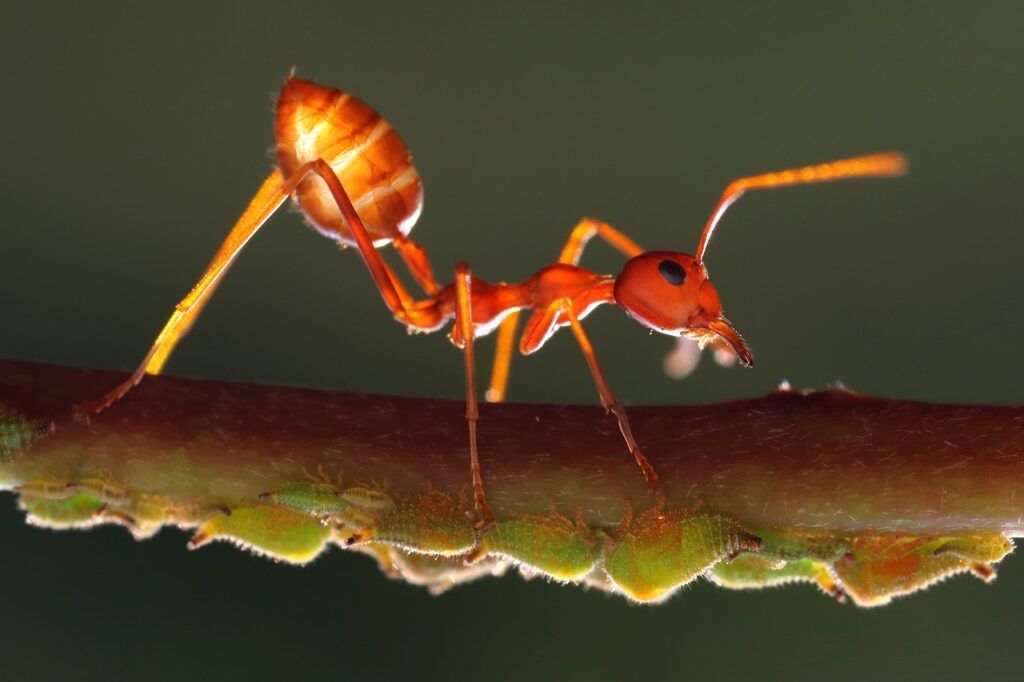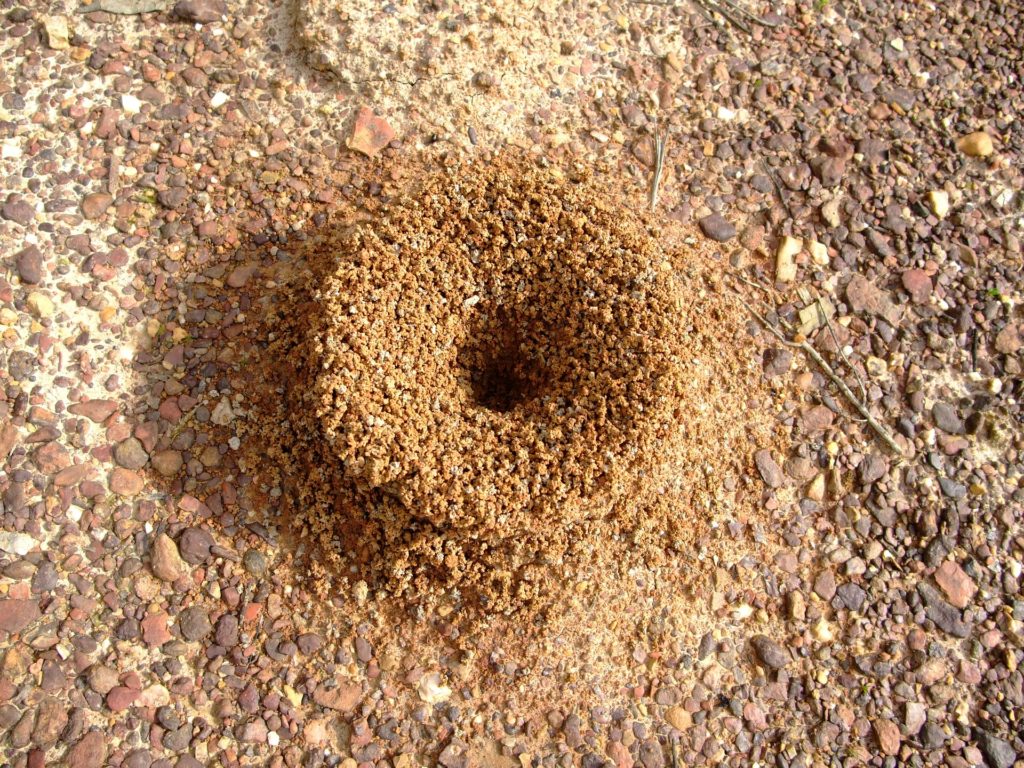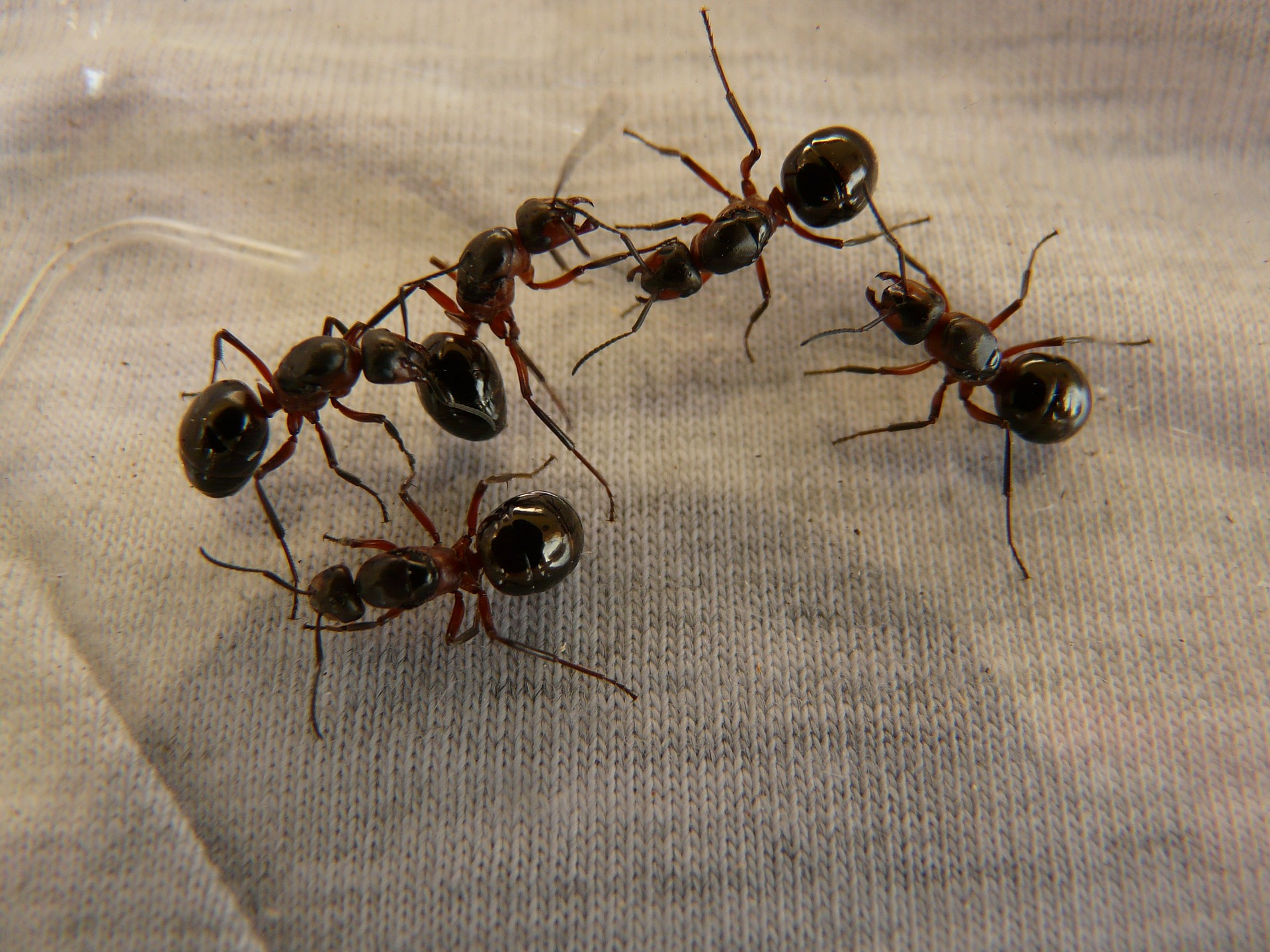Knowing how ants communicate can be important in how you can control your ant problem. This is because ruining their communication channels can disrupt their way of life, potentially weakening their colony and making them more vulnerable to ant control. Here are the different ways how ants communicate and how you can take advantage of them.
How ants communicate with each other
Ants communicate by using parts of their bodies. Here is a list of just how they do this:
1. Antennae
Ants communicate in a variety of ways. They can communicate through touch, smell, and even sound waves and vibrations. In these different ways of communication, their antennae play an integral part.
Ant antennae help detect pheromones that other ants release to communicate a food source. They also help detect sounds and waves that communicate danger. Ants also touch antennae to exchange pheromones and make their search for food more effective.
2. Forelegs
Ants also use their forelegs to communicate vibrations. This often involves their front legs rubbing their bodies or touching another ant’s front legs. These movements produce different kinds of vibrations that communicate different kinds of information.
The vibrations can convey a call for help, a signal that they have found food somewhere, or a warning of a nearby danger. The ants can analyze the patterns in the vibrations and react accordingly.
3. Gaster
The gaster is the rear end of the ant’s body. It contains the ant’s chemical weaponry, digestive system, and heart. It’s also a vital part of ant communication. The gaster has specialized glands that produce and release pheromones.
These pheromones can signal a variety of information, such as the fact that the ant producing them has found a food source. Other ants will be able to detect these pheromones and get to the food source with ease. This is essentially how ant trails are formed and why you keep seeing a line of ants on your walls.
4. Mandibles
Mandibles are the “jaws” you see in front of an ant’s head. They have a variety of purposes, such as biting, carrying objects, and cutting. And they are also used for communicating. Ants can open and close their mandibles and use them to touch other ants.
These gestures can communicate different things, such as the fact that the ant has found food and needs some help gathering it. They can also communicate dominance or submission.

Why do ants communicate with each other?
1. Danger
When an ant is threatened or injured, it releases alarm pheromones to warn the ants of its colony regarding the danger. The other ants will then assess whether to fight the threat or flee the vicinity. This is an integral part of the preservation of the colony.
You can use this to your advantage in your ant control journey. There are ant baits out there that mimic the alarm pheromones of ants. Ants are usually attracted to these baits because they are edible, and their need for food often outweighs their need to avoid danger. Ant baits are toxic to ants, so they are a great way to get rid of the ant colony bothering your home.
2. Food source
Ants produce and leave pheromones behind to basically connect the ant colony and the food source. Other ants can simply follow the pheromone trails to get the food from the source and carry it back to the colony.
One way ants detect these pheromones is through their sense of smell. Therefore, you can disrupt their sense of smell or mask the smell of the pheromones to prevent ants from getting food and thriving on your property. You can do this by spraying a substance with a strong smell on ant trails. Commercial pesticides are ideal. But you can also use home remedies with strong odors like vinegar.
3. Nest location
Ants also use pheromones to communicate the location of their nest to other ants. This works by marking the ant nest with pheromones for other members of the colony to detect.
This can actually help you find the ant nest bothering your home, especially if you are having trouble finding it. Simply follow the ant trails you see around your property. They lead directly to the nest. Once you have found the nest, you can finally use pesticides or home remedies to get rid of the ants directly from the source.
4. Queen recognition
Pheromones are used not only for communicating food sources and nest locations but also for queen recognition. The queen leading the ant colony produces specialized pheromones to signal her position and importance. The ants of the colony will recognize these and groom and feed her for her survival.
You can trick these ants with poison masked as food, so they end up bringing the toxic food back to their colony and feeding the queen with it. This is how ant baits essentially work. You can buy commercial ant baits or you can make some yourself by combining boric acid and sugar. Just be careful in using ant baits around children and household pets like cats and dogs.
5. Social status
Ants have an organized caste system. One or a few ants are reproductive queens while the majority of the ants are workers and soldiers. With their different body parts and pheromones, ants can communicate their social status to one another.
You can significantly reduce the population of an ant colony by targeting the worker ants, which are most of the ants you see foraging and scouting for resources. However, a more effective approach will be to get rid of the queen or queens sustaining the population of the colony with ant baits.
6. Territory defense
When an ant feels a threat to its territory, it will communicate the threat to others via signals, primarily pheromones. These signals are basically a call for help, so other ants will go to the area to help defend their territory.
Pest control professionals use synthetic pheromones to disrupt these signals. These can make the ants confused and disoriented, making their defense uncoordinated and ineffective. This can make the elimination of their ant nest easier.

Ants communicate in a variety of ways
Ants primarily communicate with chemicals known as pheromones. They use their antennae and gaster to produce and detect these chemicals. And they also use their forelegs and mandibles to convey different kinds of information.
If you know how ants communicate, you may have an easier time getting rid of the ants on your property. You can disrupt their communication channels to prevent them from thriving in your area and coordinating a defense against your ant control methods.


interesting,THANXX